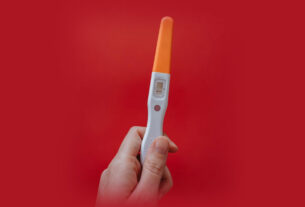Couples who are sexually active and want to avoid unwanted pregnancies can opt for a wide range of birth control methods. There are many types of birth control methods available, which helps to avoid pregnancies. Each method has its advantages and disadvantages in different forms. However, the only efficient method is abstaining from Sex.
Birth control measures
Birth control measures are techniques and methods used to prevent fertilization or to interrupt pregnancy at various stages. All birth control methods are based on either preventing man’s sperm from reaching and entering a woman’s egg or preventing the fertilized egg from implanting in the woman’s uterus and starting to grow.
Barrier methods of Birth control
- MALE CONDOMS
- FEMALE CONDOMS
- DIAPHRAGM
- CERVICAL CAP
- SPERMICIDAL AGENTS
- CONTRACEPTIVE SPONGE
- ORAL CONTRACEPTIVE PILLS
- INTRAUTERINE DEVICES
- PATCHES
- VAGINAL RING
- IMPLANTS
1. MALE CONDOMS
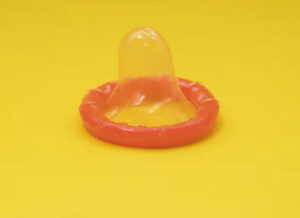 Male condoms are a more common birth control method than female condoms. A male condom is a skinny sheath that is worn over the man’s penis during sexual intercourse. Condoms must dispose of after single use. While intercourse condom will collect sperms so that the sperms are not releas into a woman’s vagina.
Male condoms are a more common birth control method than female condoms. A male condom is a skinny sheath that is worn over the man’s penis during sexual intercourse. Condoms must dispose of after single use. While intercourse condom will collect sperms so that the sperms are not releas into a woman’s vagina.
A condom must be a perfect size and fit the erect penis of a man’s smoothly. There must be about 1.25cm at the tip of the condom to allocate a space for the sperm-filled semen to collect. Some condoms have this feature built-in. Some condoms come pre-lubricated. If additional lubrication is required a water-based lubricant can be used.
Advantages
- They are easily available and usually inexpensive
- Male condoms help to prevent pregnancy as well as
- It protects against the transmission of Sexually transmitted diseases and other infections
Disadvantages
- Chances of condom break slip or come off the penis
- Poor withdrawal technique
- Condoms may reduce the pleasure of the sexual activity
- Sexual partners who are sensitive to latex products should not use latex condoms, it may cause infections and allergies though other condoms made with vinyl are available in the market for people who are allergic.
2. FEMALE CONDOMS
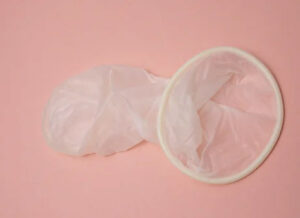 It is a vaginal pouch with two rings at either end. It is made of soft polyurethane. One end of the pouch is open and another end is closed. The closed-end of a condom is inserted into her vagina over her cervix. The open end remains outside of her vagina. During the time of intercourse, through the open end of the female condom, the man inserts his penis into her vagina. once the sexual intercourse is completed and the man withdraws his penis from her vagina, the condom containing the ejaculated sperm can be thrown away.
It is a vaginal pouch with two rings at either end. It is made of soft polyurethane. One end of the pouch is open and another end is closed. The closed-end of a condom is inserted into her vagina over her cervix. The open end remains outside of her vagina. During the time of intercourse, through the open end of the female condom, the man inserts his penis into her vagina. once the sexual intercourse is completed and the man withdraws his penis from her vagina, the condom containing the ejaculated sperm can be thrown away.
Advantages:
- It provides some protection to the labia area of the female and penis base.
- Female condom works well with oil type lubricants.
- It can keep in the vagina for an average of eight hours prior to the intercourse
Disadvantages:
- The female condom is difficult to insert compared with a male condom and may cause discomfort, a woman may need some practice also
- It does not contain a lubricant of spermicide
- High risk of urinary tract infection if left in the vagina for longer time
- Difficult to remain in place
- Produce unpleasant sound if there is not enough lubrication while inserting the erect penis
3. DIAPHRAGM FOR BIRTH CONTROL
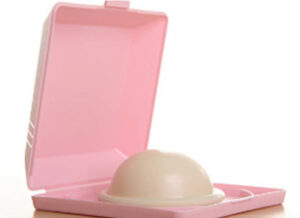 A diaphragm is made of a smooth flexible rubber cup shaped like a dome that is inserted into the vagina. The diaphragm prevents the entry of sperms to the cervix, so that sperm cannot pass from the vagina into the uterus. A woman inserts the diaphragm into her vagina no more than 4 hours before intercourse. After sexual intercourse, she should make sure that the diaphragm has not been dislodged and is still in the correct position. It should be kept in place for at least 6-8 hours after sexual activity
A diaphragm is made of a smooth flexible rubber cup shaped like a dome that is inserted into the vagina. The diaphragm prevents the entry of sperms to the cervix, so that sperm cannot pass from the vagina into the uterus. A woman inserts the diaphragm into her vagina no more than 4 hours before intercourse. After sexual intercourse, she should make sure that the diaphragm has not been dislodged and is still in the correct position. It should be kept in place for at least 6-8 hours after sexual activity
Since diaphragms are only available with a prescription, a woman must see a health service provider have a diaphragm properly fitted because it comes in different sizes
Disadvantages:
- The requirement of correct fitting size and proper technique to use.
- Chance of urinary tract infection with long-term use
- if left in the vagina for more than 24 hours there is a high risk for toxic shock syndrome
- A poorly placed diaphragm have a risk to slip off
4. CERVICAL CAP
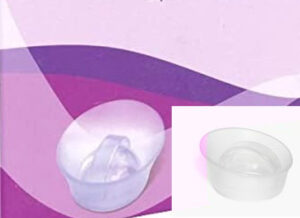 It is small-sized almost about 3 cm, its looks like a thimble-shaped dome made with latex or silicone rubber. It is smaller than the diaphragm and it fits right over the cervix. The cervical cap should use along with spermicide. A little amount of spermicide is required within the cap during insertion. The cap and the action of spermicide prevent sperm from entering the uterus.
It is small-sized almost about 3 cm, its looks like a thimble-shaped dome made with latex or silicone rubber. It is smaller than the diaphragm and it fits right over the cervix. The cervical cap should use along with spermicide. A little amount of spermicide is required within the cap during insertion. The cap and the action of spermicide prevent sperm from entering the uterus.
A woman using his fingers pushes the cervical cap up her vagina and into position over her cervix. It kept in place for up to 48 hours. A woman must consult the gynecologist to identify the correct size and learn about the proper insertion technique.
Advantages:
- No re-application of spermicide is required for constant protection till forty-eight hours for many numbers of sexual intercourse.
Disadvantages:
- Should identify the exact size
- Required training for insertion
- Cervical erosion will cause vaginal spotting
5. SPERMICIDAL AGENTS
Spermicides are made up of nonoxynol or nonoxynol-9, these chemicals will destroy the cell’s membrane of the sperm. They are widely available in the form of
Vaginal foams
films
creams
Jellies
Suppositories
Advantages:
- Easy application and budget-friendly
- The lubrication in the spermicides will increase the pleasure of sexual intercourse
Disadvantages:
- Spermicides are toxic to good bacteria required for the vaginal health
- Spermicides increase the risk of STDs and harmful bacterial infections such as E-coli.
- It should insert at least 10- 15 minutes prior to sexual activity
- It is difficult to insert and may cause discomfort
- Women who have sensitive vaginas may cause an allergic reaction to spermicides.
6. CONTRACEPTIVE SPONGE
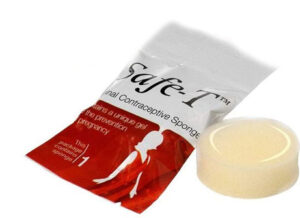 The contraceptive sponge is doughnut-shaped. It is made of polyurethane foam and is impregnated with a spermicide birth control method. This spermicide is necessary for the contraceptive capability of the sponge. Before intercourse, a woman pushes the sponge up into her vagina, the same as a tampon. The spermicidal sponge will then play as a barrier to prevent sperm from entering the cervix. Once it placed, the sponge act for protection for up to 24 hours without additional application of spermicide
The contraceptive sponge is doughnut-shaped. It is made of polyurethane foam and is impregnated with a spermicide birth control method. This spermicide is necessary for the contraceptive capability of the sponge. Before intercourse, a woman pushes the sponge up into her vagina, the same as a tampon. The spermicidal sponge will then play as a barrier to prevent sperm from entering the cervix. Once it placed, the sponge act for protection for up to 24 hours without additional application of spermicide
Advantages
- easy to use;
- does not perceptibly hinder sexual experience;
- effective immediately if used correctly;
Disadvantages
- Relatively low contraceptive effectiveness.
- Possible development of thrush.
- It does not protect against sexually transmitted infections and diseases.
- Can cause dryness in the vagina, allergic reaction, itching
- You should insert the sponge 10 minutes before sexual intercourse
7. ORAL CONTRACEPTIVE PILLS
 Birth control pills or oral contraceptives are medications that prevent the fertilization of eggs. These are hormonal preparation that may contain a mixture of the hormones estrogen and progestin alone.
Birth control pills or oral contraceptives are medications that prevent the fertilization of eggs. These are hormonal preparation that may contain a mixture of the hormones estrogen and progestin alone.
Oral contraceptives are expected to be about 99.9% effective as birth control methods. The oral contraceptive pills must be taken from the fifth day of the menstrual cycle, women count from day one of their menstrual cycle, day one as the first day of bleeding and on the fifth day, the first tablet should take. Tablets then should take daily. Most birth control pills are packaged as 21 days or 28-day units. For 21-day packages, tablets are taken daily for consecutive 21 days. This is followed by a 7 day during which no contraceptive pills are taken and the cycle repeats. For 28 unit packages, after the 21 days of contraceptive pills, a placebo (contains no medication) is taken on the remaining days.
Side effects
- Weight gain or bloating
- Change in appetite
- Nausea
- Mood swings
- Sex drive
- Breast tenderness
- Vaginal discharge
- Headache
- Spotting between periods
Advantages
- Prevents pregnancy
- Eases menstrual cramps
- Decrease the risk of ovarian and uterine cancer
- Decrease incidence of ovarian cysts
- Regulated periods
- Reduce acne problems
Disadvantages
- Requires a medical prescription
- Increased risk of cardiovascular disease
- Require to taken at the same time every day
- No protection against sexually transmitted disease
8. INTRAUTERINE DEVICES
Intrauterine device or Intrauterine contraceptive device or IUD is a form of contraception that involves an object placed in the uterus to prevent fertilization of an egg by sperm, inhibit tubular transport. They are commonly shaped like a “T”, and the arms of the T aid in hold the device in place.
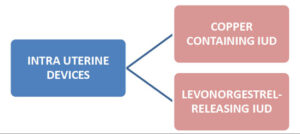
Copper containing IUD
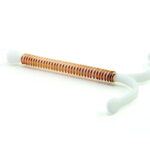
The TCu380A is a copper IUD. The copper wrapped wire on the base releases copper. The released copper will lead to a swelling reaction in the uterus that prevents the fertilization of the egg. It can keep remain in place for 10 years
Levonorgestrel- releasing IUD
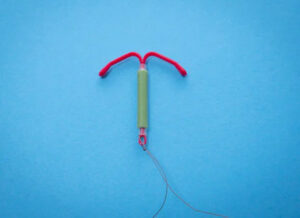
The levonorgestrel-releasing IUD releases a hormone called progestin from the vertical side of the IUD. This form of IUD can use for up to 5 years. This progestin helps in cervical mucus thickening and prevents the sperm from entering the uterus
Advantages
- IUDs are very successful form of contraception (birth control) that have a high success rate of 99%.
- Their effects are long-lasting. Once inserted, an IUD stops pregnancy for 5 years or even more. So, you can save from taking a pill every night or wearing a condom every time you have sex with your long-term partner. Just get an IUD insert in your uterus, and you can stop worry about contraception for several years.
- Unlike permanent sterilization, the effectiveness of this contraceptive device is completely reversible. You can stay infertile for as long as you do not want to get pregnant, and you become fertile and increase the chance of pregnancy again once you get it remove. So, if you inserted an IUD for 5 years, and you change your mind to have a baby before that, you can simply get your IUD removed, and become completely fertile again.
- An IUD is not having any side effects on your breastfeeding. So, you can get an IUD insert and continue breastfeeding your baby.
- Unlike pills and condoms, you should not require to keep anything by your bedside, and you can keep a secret if you want that you are using this contraceptive. During your travel, you don’t need to carry anything in your bag.
- Copper IUDs do not contain hormones, which means that they keep you infertile without causing any hormonal changes in your body.
Disadvantages
- Once inserted, around 1% of women have a chance of infection, and 1% of them have a risk of perforation or damage to the womb.
- Copper IUDs may increase the chance of making your periods more painful and heavier than usual
- Some women may also have the risk of an allergic reaction to a foreign material inserted into their bodies.
- hormonal IUD may have side effects like headaches, acne, nausea, breast tenderness, weight gain, loss of libido, mood changes, etc.
- In some cases, IUDs may come out on their own. So it is important to check its strings after each period.
9. PATCHES
It is a skinny beige square piece of plastic that can you can stick to the skin. It releases hormones that prevent releasing eggs from your ovaries. The hormones also thicken your cervical mucus, which helps to prevent sperm from reaching towards the egg. Patch change require once a week
Advantages
- The patch is very effective
- If you are the sort of person who would have a strain to take a pill every day, the patch might be the right choice. You only required to make sure that you stick once a week.
- It does not interrupt your sexual activity
Disadvantages
- No protection from sexually transmitted diseases
- Should not use if you have certain medical conditions or take certain medications
- It does require a prescription from your health service provider
- Side effects like nausea, increased appetite, Irregular bleeding, risk of forming blood clots
10. BIRTH CONTROL VAGINAL RING
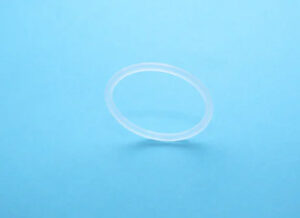
The vaginal ring is one of the effective birth control methods. The vaginal ring is a soft, versatile piece of plastic that contains artificial hormones to be absorbed inside the vagina. It is a hormonal method of birth control that should use only by prescription. These hormones aids to regulate your fertility in the same way as how natural hormones work.
The device can insert into your vagina for three weeks and it is remove on the fourth week and allows you to occur during your menstrual period. At the end of the fourth week, the process will repeat again. The vaginal ring starts to work immediately, but the second form of contraceptive should be used during the first seven days of your first month’s use of the vaginal ring.
Advantages
- Highly effective when used correctly
- Does not inhibit sexual spontaneity
- Fewer side effects
- You oughtn’t to remember to take a pill daily
- It is reversible.
Disadvantages
- No protection against sexually transmitted diseases
- Requires a prescription
- Requires monthly insertion and removal
Side effects
- Headaches
- Dizziness
- Nausea
- Breast tenderness
- Fatigue
- Moderate weight gain
- Change of appetite
11. BIRTH CONTROL IMPLANTS

A birth control implant is a small device that releases hormones to stop ovulation and pregnancy. The device should insert beneath the skin on the inside of your non-dominant upper arm. It can be in place for a period of 3 years before it needs to be removed or replaced.
Advantages
- Immediately effective
- Private/ hidden
- Effective up to 3 years
Disadvantages
- Does not protect against STD
- Placement and removal requires a doctor
- Chance to expel
Each of the birth control or contraceptive measures has its advantages and disadvantages. Sexually active people can discuss with your health service provider and select the best birth control method.


